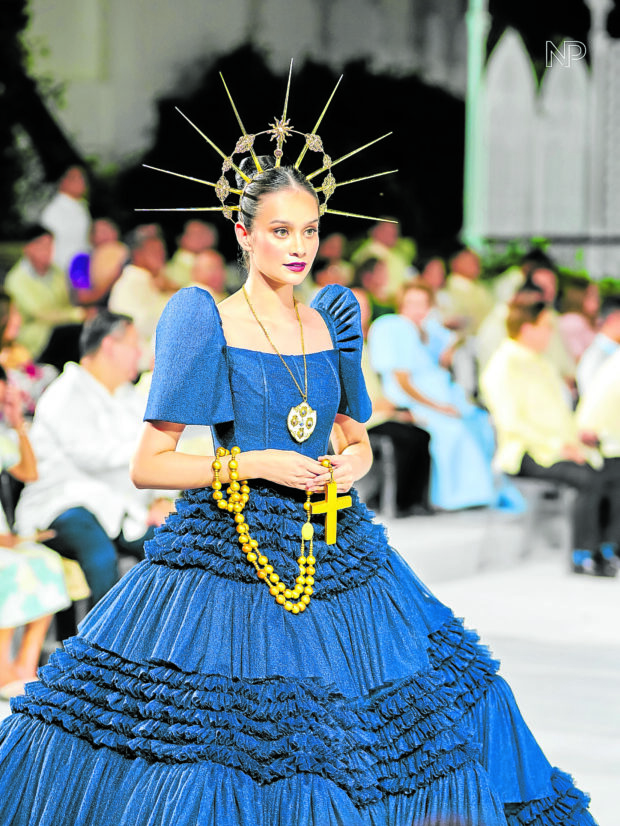
to “inaul” of Mindanao. Looks from his Goldenberg collection —CONTRIBUTED PHOTOS
Michael Leyva found purpose when he set out to work on “Isang Pilipinas,” the third sartorial showcase last Tuesday in the “Goldenberg Fashion Series” launched earlier this year.
Inspired by “Likha,” a program spearheaded by first lady Liza Araneta-Marcos in support of the country’s skilled artisans that include weavers, embroiderers, jewelers, basketmakers, wood carvers, potters and shell craftsmen, the fashion show highlighted the enduring beauty and artistry of Philippine weaves—from inabel and abaca of Luzon and hinablon of the Visayas, to inaul of Mindanao.
In preparation, Leyva visited weavers from Albay, Cebu and Maguindanao to learn about their craft, culture and stories.

“It’s my first time to work on the ethnic fabrics that we have in the country, so I was so into it,” he told Lifestyle. “I was so amazed!”
He added, “As a young designer, I was surprised by how beautiful they were. I went to Sultan Kudarat. The inaul fabric is really so beautiful. Wow. How did I not know it was this beautiful? I was so fortunate that I was able to visit their town.”
In the recent State of the Nation Address, the designer dressed around a hundred attendees. “That was a tough week for me,” or so he thought, he said. “Turns out, the week [spent preparing for ‘Isang Pilipinas’] was the toughest.”
Grateful
But Leyva was grateful. In a video projected across the Goldenberg Mansion at the beginning of the show, he said in Filipino: “I believe that the reason I’m so blessed by our Creator is because I have a purpose, and that is to be an instrument for providing livelihood to our fellow Filipinos, like the weavers and the embroiderers; revive the industry; and spread the message about this part of our culture, that it may be known not only in their own areas but throughout the Philippines and even the world.”
Leyva believes that fashion could be an important tool in unifying the country. “The show represents Luzon, Visayas, Mindanao. It’s not just always Luzon, we also pay tribute to Mindanao people, Visayas people when it comes to their textiles. The Philippines is rich in culture and heritage, so I think it’s important that we showcase those on this platform.”
Held outside the mansion, the runway circled the iconic fountain while the orchestra played original Pilipino music—from kundiman to contemporary.
The three-part collection was a parade of quintessential Michael Leyva gowns—romantic and opulent—infused with Filipiniana flavor and wrapped in ethnic weaves. It started out with fun, ice cream colors, turning deeper as the show progressed, until finally going richer and more vibrant.
While many sported the butterfly sleeves of the terno, the designs took care to be representative of the country’s different cultures, also making use of elements like sarong that took the form of the tapis, alampay, patadyong or malong depending on the region.
Asked if he thinks Filipiniana is finally on the up and up, Leyva replied, “It should be!”
Filipiniana is the “new ‘in’ right now,” he said, confirming that even in his studio, requests for Filipiniana designs have been on the rise. “We should be proud of our culture and heritage.”
—CONTRIBUTED PHOTOS

